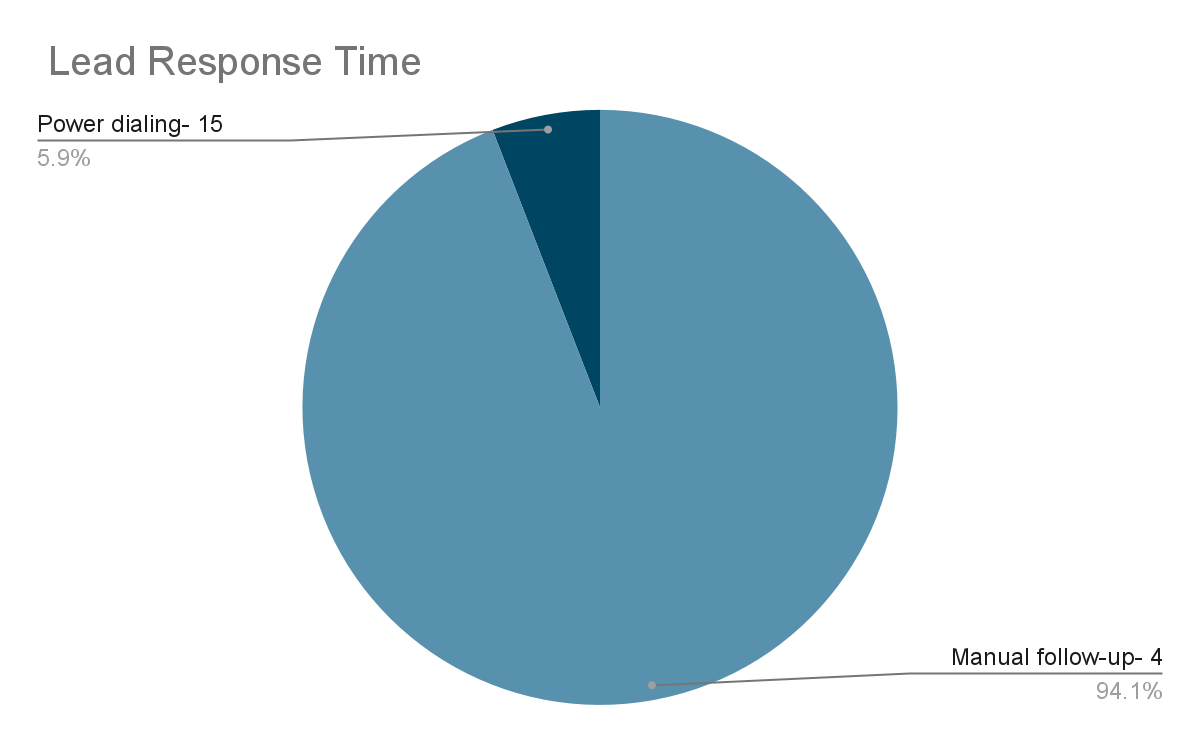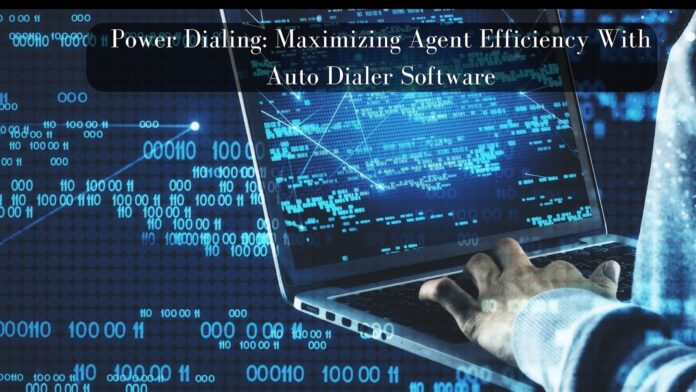The world of outbound sales and lead generation has been transformed by the evolution of auto-dialing technologies. Power dialing, in particular, has emerged as an invaluable tool for modern contact centers looking to enhance agent productivity and streamline outbound initiatives. Let’s explore the history, modes, benefits, and real-world impact of power dialing solutions.
The Evolution of Auto Dialing in Modern Contact Centers
Dialing technologies have revolutionized contact center operations by eliminating the need for agents to manually dial every number on their call lists, significantly increasing workflow automation. As we delve into the history of auto-dialing, it’s evident that technology has played a pivotal role in enhancing agent productivity.
The shift from manual dialing to automated solutions has been a game-changer for contact centers. Back in the day, agents had to repeatedly dial numbers one by one to progress through their lead lists. This was a tedious and time-consuming process. The introduction of auto-dialers that could programmatically dial contacts without agent intervention boosted efficiency tremendously.
Today, sophisticated power dialing solutions integrate seamlessly with CRM and contact center infrastructure to deliver optimized outbound call pacing. Agents are presented with a continuous flow of dialed leads without wasting time between calls. This automation allows them to focus more on conversations and relationship-building.
The Different Modes of Auto Dialing
While the evolution of auto dialing has set the stage for modern contact centers, it’s the specific modes of dialing that truly define their efficiency. Let’s explore these modes to understand their unique characteristics and benefits.
Power dialing also enables increased compliance and risk mitigation. With the right telemarketing auto dialer contact centers can ensure they abide by critical regulations. Features like automatic recording, DNC list scrubbing, and customizable opt-out messaging help keep dialing above board.
- Power Dialing automatically dials the next contact on the list as soon as an agent completes a call, ensuring that agents don’t waste time deciding which number to dial next.
- Predictive Dialing takes automation a step further by using statistical algorithms to dial multiple contacts simultaneously. It predicts when a call is likely to be answered and ensures an available agent is ready for the connection. This mode optimizes live call connections.
- Preview Dialing is ideal for sales teams as it allows agents to review lead information before initiating a call. This ensures they are prepared with relevant context instead of going in cold.
- Progressive Dialing is configured to only present live, answered calls to agents when they are free rather than dialing blindly. This prevents agents from experiencing downtime.
Key Benefits of Power Dialing Solutions
While understanding the modes of auto-dialing is crucial, it’s equally important to recognize the tangible benefits these systems bring to the table. Let’s dive deeper into how power dialing, in particular, can be a game-changer for contact centers.
Power dialing enhances agent efficiency by automating the dialing process, ensuring that agents don’t have to manually dial numbers. This automation allows agents to focus more on the conversation and less on the technicalities of dialing.
Studies show that manual dialing results in only 2-3 hours of talk time for agents per day. However, leveraging power dialing can increase talk time to 5-6 hours due to accelerated pacing through call lists.
Moreover, power dialers provide better lead management, and personalized customer service, and have been linked to higher sales conversions. The accelerated pacing leads to more conversations and opportunities to land sales.
Power dialing also enables calling local numbers from anywhere to present callers with a familiar area code. This increases pick-up rates when agents call locally but operate remotely.
The Impact of Power Dialing on Outbound Sales Initiatives
Now that we’ve established the undeniable advantages of power dialing, it’s essential to see its real-world impact, especially on outbound sales initiatives. How does this technology align with campaign goals, and how does it play a role in converting leads faster? Let’s find out.
Sales campaigns aim for maximum reach and efficiency in working through lead lists to identify promising prospects. Power dialing is invaluable for outbound calls targeted toward list-building, lead nurturing, data verification, customer surveys, upselling, cross-selling, renewals, and more.
The main goal of power dialing aligns perfectly with sales objectives – enhanced connection rates. With manual dialing, 60-80% of calls go unanswered and 10-20% are bad numbers. Power dialers can boost live call connection rates to over 50-60% by automatically scrubbing out wrong numbers and focusing on targeting engaged leads.
Higher connection rates mean more conversations and a greater likelihood of surfacing prospects who convert to sales. Power dialing also provides detailed analytics on call outcomes to refine strategies. Overall, it delivers results fast at scale – catalyzing conversions by reaching more leads sooner.
Real-World Success Stories
The effectiveness of power dialing is evident from success stories and testimonials from leading businesses across industries:
- CloudTech, a B2B startup offering SaaS solutions, leveraged power dialing to qualify 6000 new prospects in just 3 weeks – reducing sales cycle time by 5X.
- RealtyNow, a real estate firm, integrated its CRM with an auto-dialer to assign callbacks automatically. This decreased follow-up time from 4 hours to just 15 minutes per lead.
- GreenEnergy, a solar solutions provider, utilized local presence dialing to boost call pick-up rates by 40%. This expanded their sales reach nationwide despite having only California-based agents.
The following pie chart highlights the difference in response time between Manual follow-up and Power dialing

Manual follow-up: 4 hours
Power dialing: 15 minutes
Integrating Power Dialing With CRM Systems
To fully optimize outbound sales efforts, it’s crucial to ensure power dialing integrates smoothly with CRM platforms. An integrated system makes lead management seamless.
Popular CRMs like Salesforce, Zoho, and Dynamics already offer embedded dialing or third-party integrations with leading dialing solutions. These deep integrations allow easy contact syncing, call logging, and click-to-dial features within the CRM interface.
Market-leading dialers like RingCentral and Five9 offer open APIs that allow custom integration. This means teams can build CRM-dialer integrations tailored to their unique requirements.
The right integration empowers sales teams with enhanced visibility into call metrics, campaign performance, and agent productivity. It also ensures optimal lead targeting and routing for conversion.
The Future of Power Dialing
Power dialing has cemented its place as an invaluable sales acceleration tool. As per projections, the global predictive dialer market will grow to $4.78 billion by 2025.
Moving forward, we can expect more advanced integrations, detailed analytics, and AI-powered optimizations in power dialing systems. Vendors are also focusing on improving predictive algorithms to boost engagements.
Compliance will continue to be an emphasis area with stringent measures to adhere to telemarketing regulations across regions. Overall, innovations in power dialing technology will empower contact centers with optimized efficiency at scale for sales growth.
Key Takeaways
- Power dialing delivers accelerated lead engagement by ensuring agents never manually dial or wait between calls.
- Integration with CRM platforms offers sales teams enhanced visibility and efficiency in executing campaigns.
- Higher connection rates achieved by power dialing translate directly to more conversions and sales growth.
Adopting power dialing solutions is a proven approach for modern contact centers to maximize agent productivity and unlock the full potential of outbound sales.
Frequently Asked Questions
1. How does power dialing differ from other auto-dialing modes?
Power dialing automatically dials leads as soon as the agent completes a call to maximize talk time. Other modes like predictive focus more on forecasting when a live call will be answered. Power dialing offers simplicity and consistent pacing.
2. Can power dialing be integrated with existing CRM systems?
Yes, leading dialing solutions offer seamless integration with popular CRM platforms like Salesforce, Zoho, and Dynamics. There are also open APIs to build custom integrations matching unique workflows.
3. What measures are in place to ensure compliance with telemarketing regulations?
Reputable power dialing vendors have measures like call masking, opt-out features, and dialer thresholds to adhere to DNC list restrictions and TCPA regulations. Teams should ensure compliance based on geographic norms.
